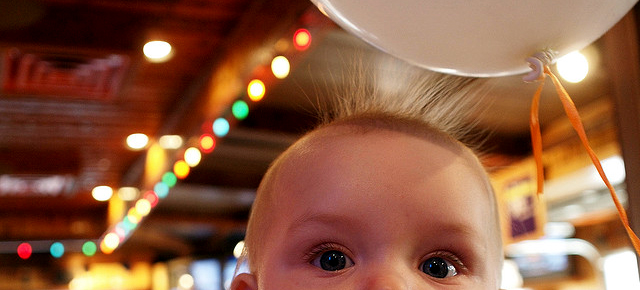At some point in physics class, your teacher probably rubbed a balloon against his hair and explained static electricity. But what your teacher didn’t tell you — the full story about static electricity — is that scientists are just now realising it is a lot more complicated than thought.
The classic explanation, if you can remember back to physics class, goes something like this: The latex of the balloon and hair have different physical properties. When you rub them together, electrons jump from one to the other, leaving one positively charged and the other negatively charged. That’s why the balloon and hair are suddenly attracted to each other.
And what about two objects of the same material rubbed together? That can produce static electricity too, but the classic explanation no longer applies. For years, physicists have suggested this works when the two objects are of different sizes, so that more electrons are rubbed off the smaller object onto the bigger one. But nope, the theory doesn’t hold up. “[T]he dominant theory appears to be dead,” Troy Shinbrot, an applied physicist at Rutgers University, told Science.
That’s thanks to a recent study published in Physical Review Letters scrutinizing tiny grains of a material called zirconium dioxide-silicate. The team lead by Heinrich Jaeger at the University of Chicago mixed two grains of the material in two different sizes. The larger grains were negatively charged and and the smaller ones positively so.
So far so good — but then Science reporter Adrian Cho describes what happens when researchers tried to count the number of trapped electrons on the surface of these grains:
They gently heated fresh grains to liberate the trapped electrons and let them “relax” back into less energetic states. As an electron undergoes such a transition, it emits a photon. So by counting photons, the researchers could tally the trapped electrons. “It’s pretty amazing to me that they count every electron on a particle,” Shinbrot says.
The tally showed that the beads start out with far too few trapped electrons to explain the static buildup, Jaeger says. In fact, even if the researchers try to make trapped electrons boil up to the surface by exposing the grains to light, the density of trapped electrons remains less than 1/100,000 of what would be needed to explain the effect.
If it couldn’t be the electrons, what could it be? Scientists speculate that the charges could come from ions of water molecules that coat the grains — or perhaps the transfer of actual zirconium dioxide-silicate molecules between the grains. A 2011 paper had suggested that static electricity between two different materials also involves the transfer of molecules, rather than just electrons.
Whatever it is, it seems like a simple transfer of electrons isn’t the full answer. Your physics teacher wasn’t lying to you — scientists didn’t know, either. And this isn’t just some idle theoretical speculation. Static electricity governs how liquids and powders behave and misbehave, and that multiplied thousandfold in a factory can mean malfunctioning machines.
Perhaps what’s most shocking is that a phenomenon ubiquitous to everyday life can still be unexplained — when most physics today seems to be verging toward the unimaginably big (cosmology) or unimaginably small (quantum mechanics). As science writer Corey Powell put it in a tweet, “Every unloading of the clothes dryer is a science mystery.” [Physical Review Letters via Science, Ars Technica]
Picture: Pat David/Flickr
